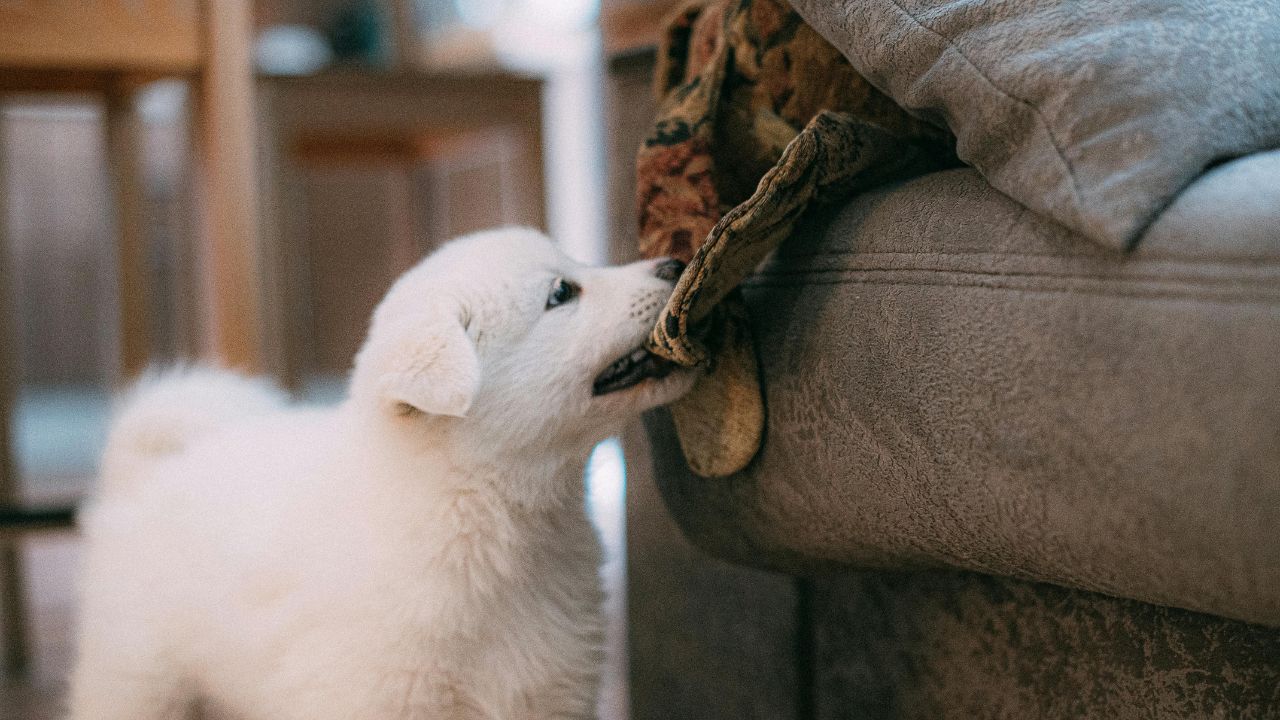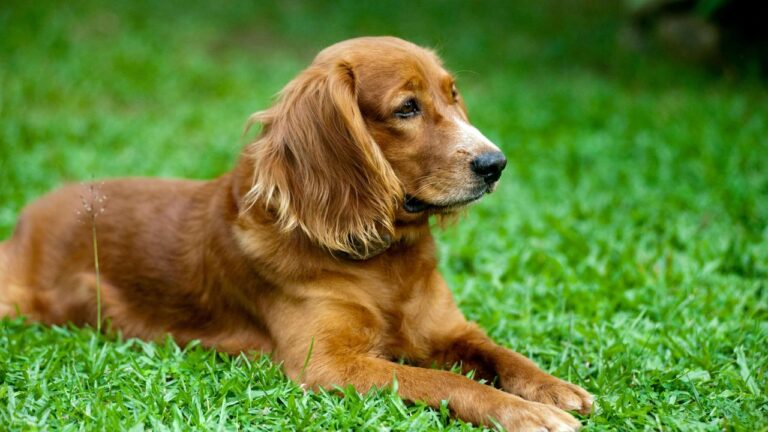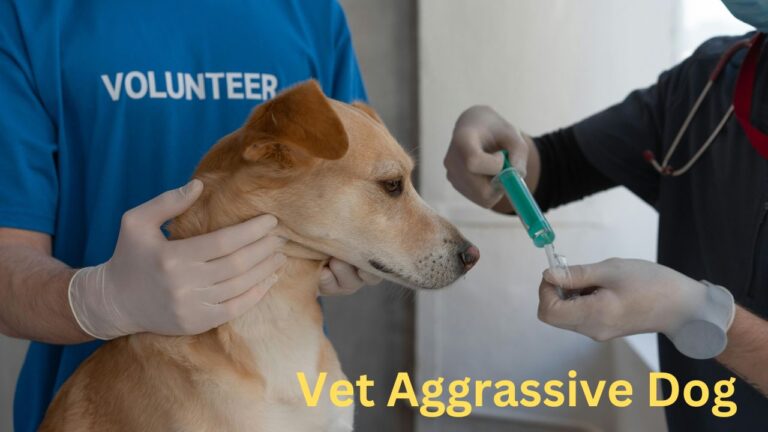How to Stop Puppies from Biting Clothes : Step-by-Step Guide
Puppies nibbling on clothes is a cute but annoying phase that almost every dog owner goes through. While puppy biting is natural, it’s important to teach them boundaries early on. Not only does this protect your wardrobe, but it also ensures your pup learns how to interact gently with humans.
Understanding Puppy Biting Behavior to Stop Puppies from Biting Clothes
Puppy biting is part of their natural development. Like human babies, puppies explore the world with their mouths. By biting, they’re learning about different textures, sensations, and limits.
Common Triggers for Puppy Biting
Why Puppies Bite and Tug on Clothes
Puppies often bite when they’re excited or overstimulated, especially during playtime. Clothes are soft, move easily, and are close to their level, making them perfect “targets.”
Recognizing Signs of Play vs. Aggression
It’s helpful to differentiate between playful biting and signs of aggression. In most cases, puppy biting is simply part of play or teething, not aggression.
Training Tips to Stop Puppies from Biting Clothing
Redirect Their Attention
Instead of letting your puppy bite your clothes, redirect their attention to a toy. Whenever they start tugging at your shirt or pants, replace the item with a chew toy.
Teach the “Leave It” Command
Teaching “leave it” is useful to prevent biting on walks and at home. This command helps puppies understand they should disengage from whatever they’re focused on.
Use Positive Reinforcement
Reward your puppy when they respond to your cues. Positive reinforcement strengthens the behaviors you want to see, like playing gently without tugging on clothes.
Time-Outs for Biting
If your puppy continues to bite, try giving them a short “time-out.” This isn’t punishment but a way to communicate that biting results in a playtime ending. This teaches them that gentle play means more fun with you.
how do vets treat aggressive dogs
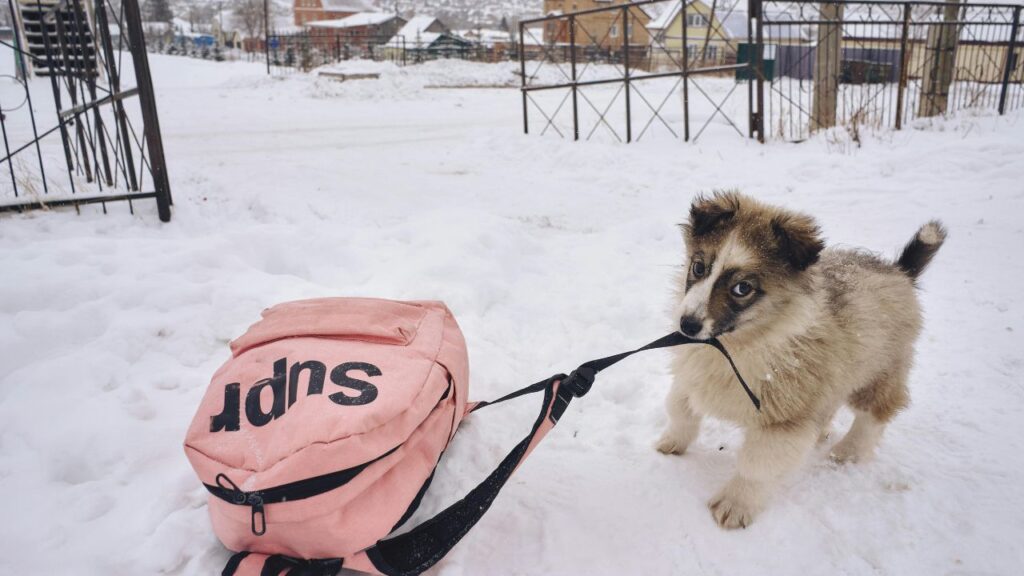
Stopping the Tugging and Growling
Addressing Puppy Growling
Sometimes puppies growl while tugging on clothes. This is often playful, but it’s important to keep their energy level in check. Stay calm and redirect them to prevent escalation.
Staying Calm and Consistent
Consistency is key in training. If everyone in the household reinforces the same rules, your puppy will learn much faster.
How to Handle 8-Week-Old Puppy Biting
At 8 weeks, puppies are exploring everything and haven’t learned control yet. They’re more easily distracted, so training at this stage should be gentle and brief. Avoid rough handling, as they’re still getting used to their environment and their own strength.
Managing 4-month-old Puppy Biting Behavior
By 4 months, puppies start to understand basic commands and expectations. At this age, it’s easier to reinforce training. Teaching them how to play without biting is crucial, as they are now more responsive and can retain new behaviors.
Strategies for Puppies That Bite and Jump on Clothes During Walks
Training on Walk Etiquette
Teach your puppy to walk without jumping or biting. Bring treats to reward them for calm behavior and redirect any biting attempts with a toy or command.
Dealing with Excitement and Distraction
On walks, puppies are often overstimulated. Consistent training and rewards for good behavior help them focus on you instead of pulling at clothes or biting.
What to Do When “I’ve Tried Everything”
Sometimes it may feel like nothing is working. If you’re feeling frustrated, revisit your methods and check for consistency. If needed, don’t hesitate to reach out to a professional trainer for additional guidance.
Why Puppies Bite Each Other and How to Redirect This
Biting is a natural part of puppy play. If they’re biting each other too hard, redirect them by calling their attention or using toys to engage them in gentler play.
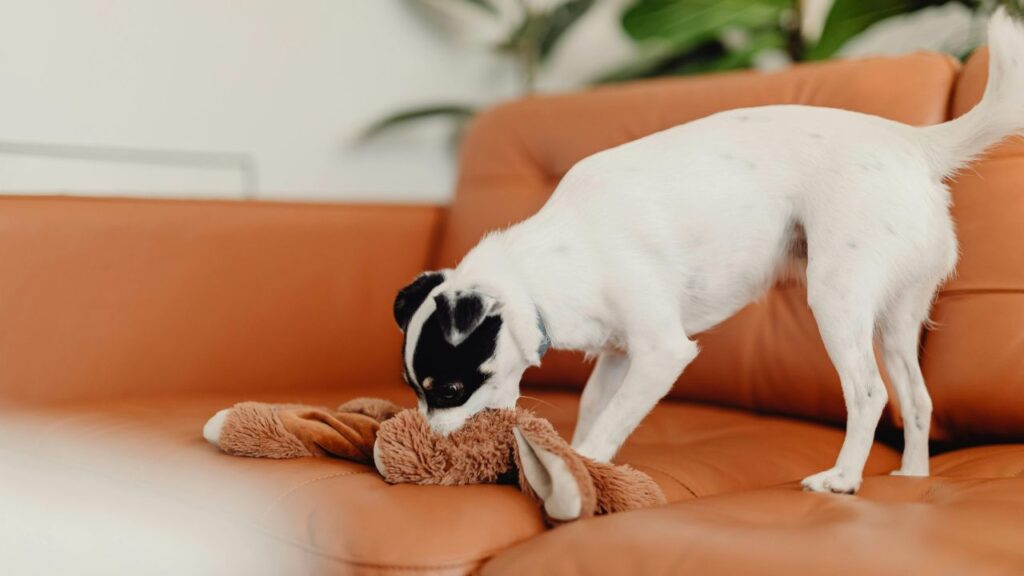
When Do Puppies Stop Biting Naturally?
Most puppies grow out of biting around six months. By this age, they have learned from consistent training and gained control over their playful behaviors.
It looks like you’re interested in more details on this topic. I’ll continue by providing some extra training tips and insights for handling biting behavior in puppies. Let’s dive into additional strategies for success:
Additional Tips for Stopping Puppy Biting and Tugging on Clothes
Understanding Teething Phases
Puppies experience different teething phases, each with its own set of challenges. During these stages, their gums may feel sore, which increases their urge to chew on anything nearby—including your clothes. You can help them through this phase with these tips:
Frozen Teething Toys
One way to soothe your puppy’s gums is by giving them frozen teething toys or a frozen cloth. The cold temperature can ease the discomfort in their gums, which helps reduce the urge to bite on clothing.
Rotating Chew Toys
Keep a rotation of different chew toys available. When your puppy has a variety of textures and shapes to explore, they’ll be less interested in biting your clothes.
Teaching Gentle Mouth Play
Mouth Play Without Biting
Puppies naturally use their mouths to play, but they can learn to do so without biting hard. If your puppy bites too hard during play, gently say “ouch” to let them know it hurts, then stop playing for a moment. This helps them understand bite inhibition and teaches them to be gentler.
Reward Calm Play
Whenever your puppy interacts with you without biting, be quick to praise and reward them. Positive reinforcement for calm play encourages them to continue behaving well.
Addressing Persistent Biting Behavior
If your puppy keeps biting and tugging even after you’ve tried multiple methods, here are a few advanced techniques that might help:
Consider Crate Training for Calming Down
If your puppy becomes overly excited and begins biting, guiding them to a quiet space like a crate can help. This isn’t a punishment but a way to provide a calming environment where they can settle down.
Working with a Trainer for Persistent Biting
In some cases, a puppy may be stubborn or overly energetic, making training harder. If you feel your puppy isn’t responding to standard methods, consider reaching out to a certified dog trainer. They can provide expert guidance and may offer tailored techniques that suit your puppy’s personality and breed.
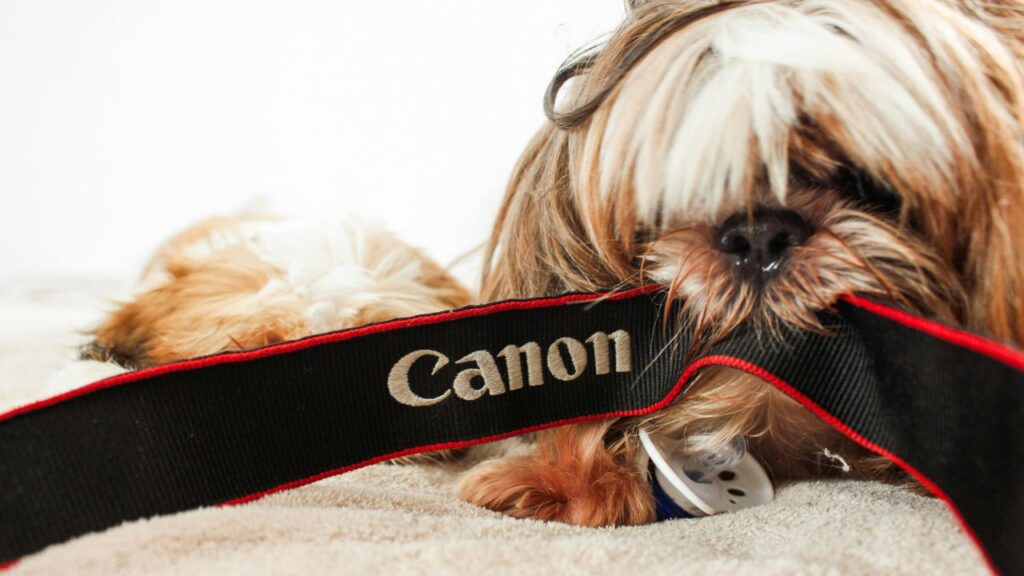
Socializing Puppies to Prevent Biting
Controlled Playdates
Socialization is key to preventing excessive biting. Arrange playdates with other puppies or well-behaved dogs. These interactions teach them social boundaries and help them understand gentle play.
Puppy Training Classes
Puppy training classes are beneficial for both socialization and basic obedience. Trainers can help your puppy understand what’s acceptable, which reduces unwanted behaviors like biting.
Long-Term Tips for Managing Puppy Behavior
Patience and consistency are essential when training a puppy not to bite clothes. Remember, this phase is temporary. By reinforcing good behaviors and staying committed to your training routine, you’re setting your puppy up to become a well-mannered adult dog.
Conclusion
Training a puppy not to bite clothes requires patience, consistency, and understanding of their natural instincts. Biting is a phase that most puppies go through, especially as they explore the world and go through teething. By redirecting their attention to appropriate chew toys, using commands like “leave it,” and rewarding positive behavior, you’re teaching them to interact gently. Remember, every puppy is unique, so it may take time to find the techniques that work best. Stick with it, and before long, your puppy will grow out of this phase, leaving you with a well-behaved and loving companion.
With consistent training, redirection, and positive reinforcement, you can guide your puppy into becoming a gentle, well-mannered member of your family. Enjoy the journey, and cherish these early days with your new furry friend—they’ll pass by faster than you think!
FAQs
- Why does my puppy bite my clothes and growl?
Puppies often bite and sometimes growl during play because they’re exploring their world and learning boundaries. The growling usually isn’t aggressive but is part of their playful interaction. If the behavior persists or intensifies, focus on redirecting them to a toy and using commands to guide their play. - What should I do if my 8-week-old puppy bites my legs or feet?
With very young puppies, gentle correction is key. Redirect their attention to a chew toy and reinforce positive play. Puppies at this age are especially curious, so frequent redirection with toys can help them understand what’s okay to bite. - My 4-month-old puppy won’t stop biting me—what can I do?
At 4 months, puppies are more responsive to training. Continue practicing commands like “leave it” and use positive reinforcement. Consistency is important, and this age is ideal for reinforcing boundaries that they’ll carry into adulthood. - How do I handle puppy biting on walks?
Puppies can get overstimulated on walks and may jump or bite at your clothes. Bring along a toy or treat to redirect their attention. Training them to focus on you with commands like “heel” or “leave it” can also help reduce this behavior. - When will my puppy naturally stop biting?
Most puppies grow out of the biting phase by around six months, as they gain control and learn boundaries. Consistent training will help them understand faster, but patience is key—every puppy develops at their own pace.
